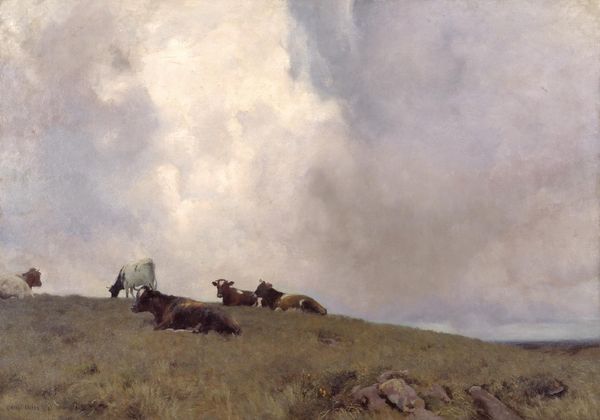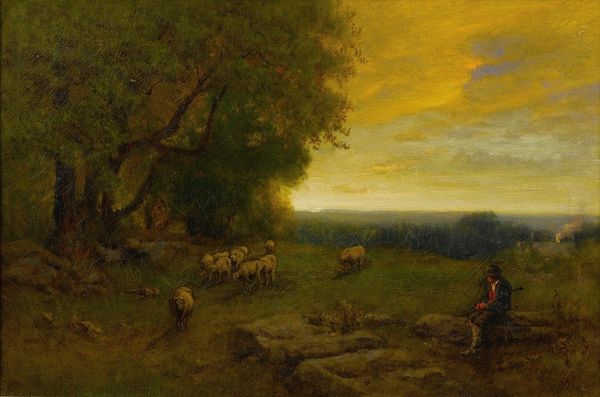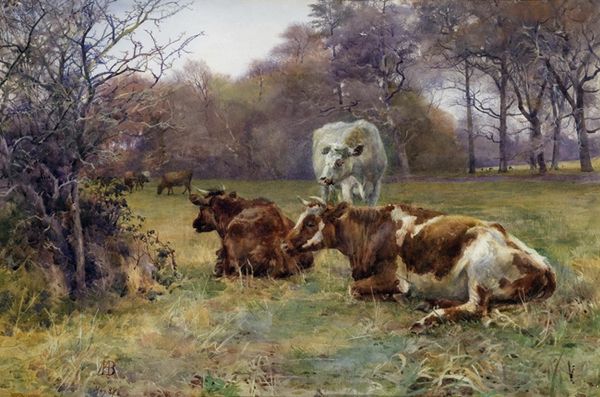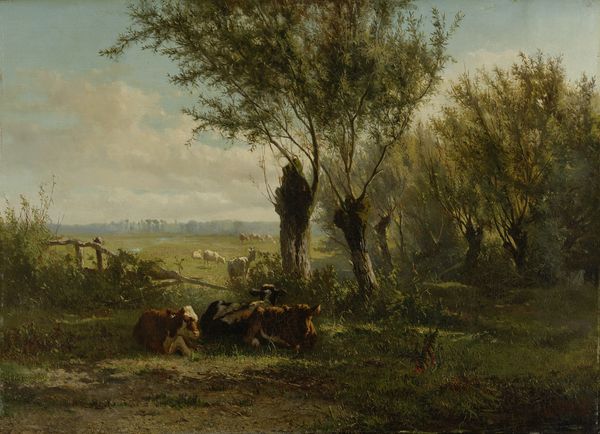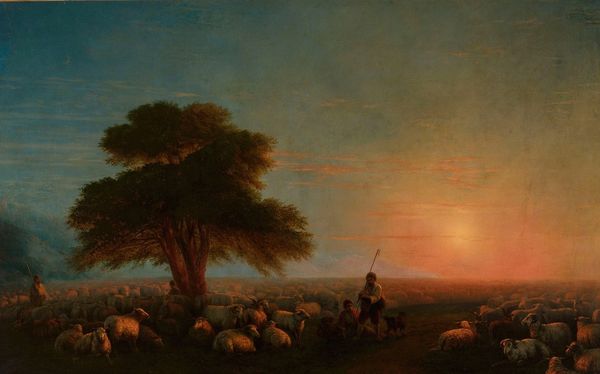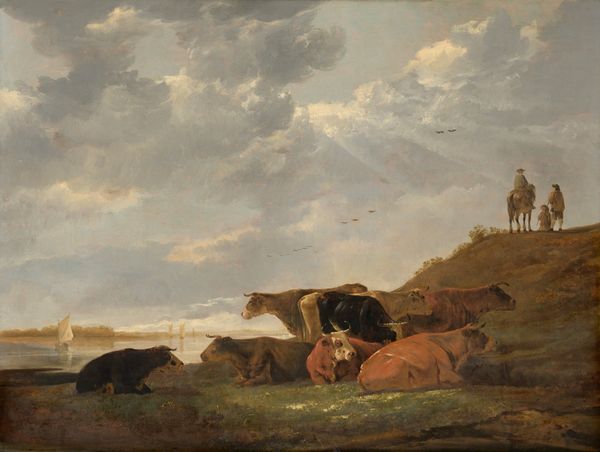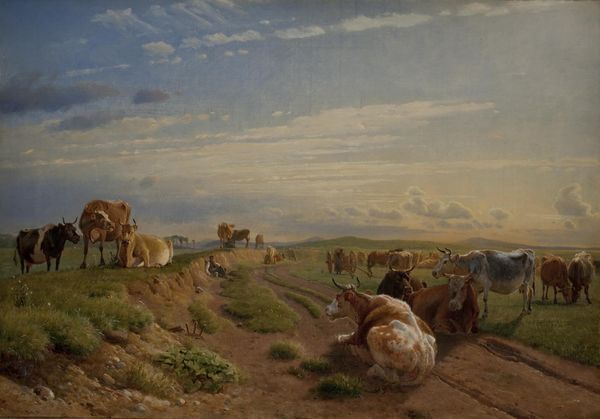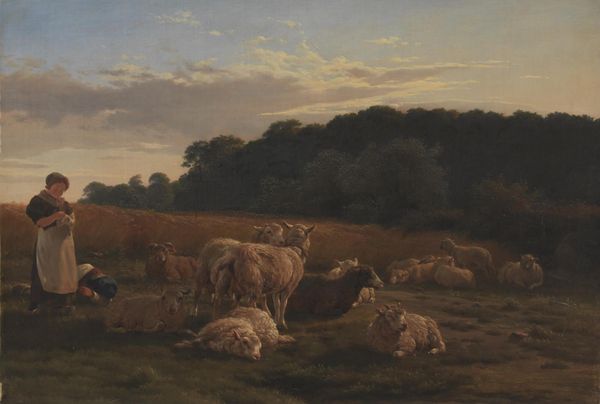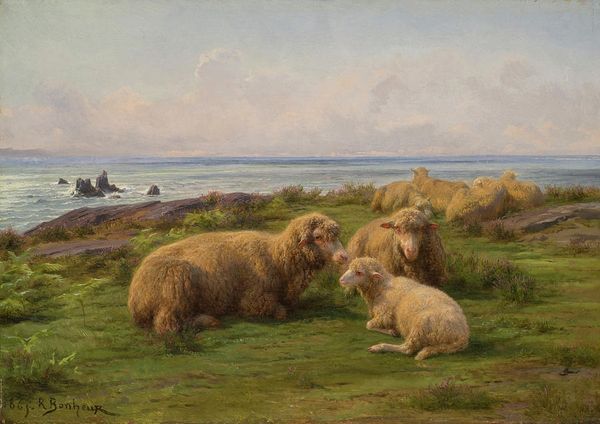
oil-paint
#
oil-paint
#
landscape
#
figuration
#
oil painting
#
romanticism
#
genre-painting
Copyright: Public Domain: Artvee
Curator: Let’s take a look at Johan Christian Dahl’s "Landscape by the River Elbe," painted in 1824. The use of oil on canvas here creates a sense of soft realism in this depiction of rural life. Editor: The first thing that strikes me is the almost pastoral sense of quiet it evokes. It’s such a placid image, a symphony of greens and browns creating a cozy scene of simple pleasures. Curator: The social context is important here; Dahl, part of the Romantic movement, was invested in the rapidly industrializing world. He depicted not the machines or urban growth, but its impact on laborers and their means of existence, offering a material document through genre painting. Look at how the labor implied by shepherding is so intrinsically bound to the materiality of the river and its geography. Editor: Absolutely. And isn't it striking how Dahl positions the sheep and shepherd with a clear symbology. The river behind them could represent a point of no return, while sheep traditionally symbolized gentleness and being lead or even misled. We may think, what is being given up to sail across the waters, leaving tradition behind? What might be the potential dangers involved in industrial progress? Curator: Fascinating that you bring up water's capacity as both medium and threat; Dahl's choice to represent that river is in no way accidental. Note how it mirrors and frames this rural scene – reflecting how that world is at risk while actively sustaining the sheep's way of life. Oil paints let him build that up materially, layering a real heaviness to both the present scene, as well as that looming horizon. Editor: Right, it’s this tension that makes the work so powerful. A potent visual reminder of how landscapes can embody so many layers of symbolic meaning; the weight of human stories, of generational memory embedded within something as apparently simple as the relationship of shepherd and sheep. It speaks to the enduring power of these archetypes. Curator: Agreed; his technique clearly reveals material production, as well as larger historical, economical movements. Editor: So, even in a seemingly tranquil image, we unearth social anxieties, and the complex layers of historical significance carried by simple forms and compositions.
Comments
No comments
Be the first to comment and join the conversation on the ultimate creative platform.


